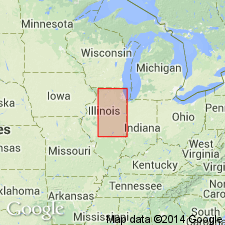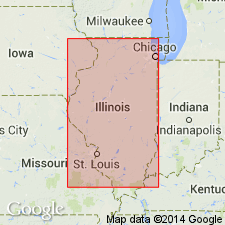
- Usage in publication:
-
- Chapin Soil
- Modifications:
-
- Named
- Dominant lithology:
-
- Soil
- AAPG geologic province:
-
- Illinois basin
Summary:
Chapin Soil is here named for town of Chapin in Morgan Co. Described as an in-situ profile developed in silt and colluvium of the Markham Silt Member of the Roxana Silt. Overlies the Sangamon Soil and generally less red than the Sangamon. Unit is important because it provides the only datum for correlation within the early part of the Altonian Substage. Also the most strongly developed soil within the Wisconsinan Stage.
Source: GNU records (USGS DDS-6; Reston GNULEX).

- Usage in publication:
-
- Chapin Geosol
- Modifications:
-
- Revised
- AAPG geologic province:
-
- Illinois basin
Summary:
Authors quote the NACSN Code in stating that the "geosol is the fundamental unit of pedostratigraphy, defined as a mappable, stratiform body of material with soil characteristics formed on a previous land surface, with an upper surface that now constitutes both a material and stratigraphic boundary. A formalized geosol is defined at its type locality as a buried soil that contains catenal members." The Chapin Soil of Willman and Frye (1970), developed in the Markham Silt is here referred to as Chapin Geosol.
Source: GNU records (USGS DDS-6; Reston GNULEX).
For more information, please contact Nancy Stamm, Geologic Names Committee Secretary.
Asterisk (*) indicates published by U.S. Geological Survey authors.
"No current usage" (†) implies that a name has been abandoned or has fallen into disuse. Former usage and, if known, replacement name given in parentheses ( ).
Slash (/) indicates name conflicts with nomenclatural guidelines (CSN, 1933; ACSN, 1961, 1970; NACSN, 1983, 2005, 2021). May be explained within brackets ([ ]).

